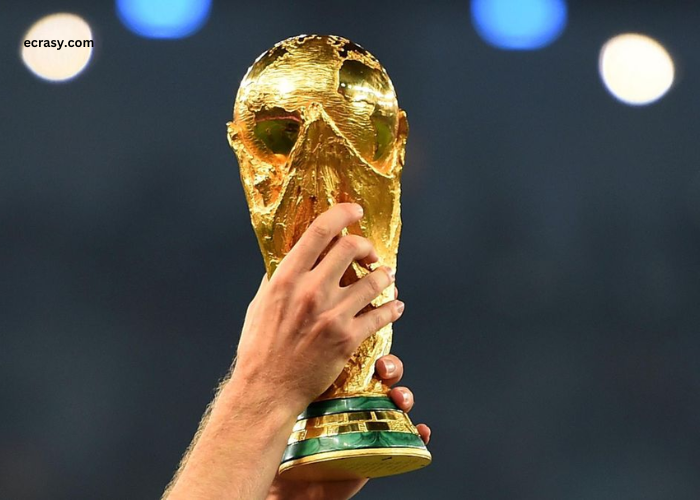The Coupe du Monde, commonly known as the FIFA World Cup, stands as a monumental event in the world of sports. Every four years, the planet comes together to celebrate the beautiful game of football, transcending borders, cultures, and languages. This global extravaganza unites nations, fuels passion, and leaves an indelible mark on history. In this SEO-friendly article, we delve into the rich tapestry of the Coupe du Monde, exploring its history, significance, and cultural impact.
A Brief History
The inception of the Coupe du Monde dates back to 1930 when it was first hosted by Uruguay. It began as a modest tournament with only 13 participating teams. Little did anyone know that this event would evolve into the most-watched sporting spectacle on the planet.
Over the decades, the World Cup has seen remarkable growth. The number of participating teams has steadily increased, reaching 32 in the 1998 edition and expanding to 48 teams in 2026. This expansion ensures greater representation from across the globe, allowing more nations to experience the thrill of World Cup football.
Cultural Impact
The Coupe du Monde has left an indelible mark on popular culture. It has inspired countless songs, films, books, and art. Iconic moments from World Cup history, like Diego Maradona’s Hand of God and the Goal of the Century in 1986, have become part of the global sports lexicon.
The official World Cup anthem is eagerly awaited by fans and often performed by renowned musicians. It encapsulates the spirit of the tournament and becomes an anthem of unity for fans worldwide.
The tournament’s mascots are also cultural icons. From the beloved Zabivaka of Russia 2018 to the quirky Fuleco of Brazil 2014, these mascots capture the essence of the host nation and add to the World Cup’s charm.
Legacy and Sustainability
With the global spotlight comes responsibility. The World Cup has been criticized for its environmental impact, cost, and displacement of communities. In recent years, FIFA and host nations have taken steps to make the tournament more sustainable. Stadiums are being designed with sustainability in mind, and efforts are made to minimize carbon footprints.
The 2022 World Cup in Qatar, for example, plans to use solar powered stadiums and has adopted advanced cooling technology to combat extreme heat. Such initiatives aim to ensure that the Coupe du Monde leaves a positive legacy beyond the tournament itself.
The Evolution of the Coupe du Monde
Over the years, the Coupe du Monde has witnessed significant transformations, not just in terms of its scale but also in its format, technology, and the way it is experienced by fans.
- Technological Advancements: The World Cup has always been at the forefront of technological innovations in sports broadcasting. From the introduction of color television broadcasts to the use of high definition and 4K cameras, the World Cup has continually pushed the boundaries of how fans can experience the game. In recent years, virtual reality and augmented reality technologies have been employed to provide fans with immersive experiences, allowing them to feel as if they are on the field with their favorite players.
- Global Broadcast and Digital Reach: With the advent of the internet, the World Cup has become more accessible than ever before. Matches are broadcast live across the globe, making it possible for fans from remote corners of the world to tune in and support their teams. Social media platforms and official World Cup websites offer real-time updates, highlights, and interactive content, enabling fans to engage with the tournament on a whole new level.
- Women’s World Cup: The Coupe du Monde is not limited to men’s football alone. The FIFA Women’s World Cup, which began in 1991, has gained immense popularity and significance over the years. It has played a crucial role in promoting women’s football and breaking gender barriers in the sport. The women’s tournament has grown in scale and competitiveness, further expanding the global reach of the World Cup.
- Economic Impact and Tourism: Hosting the Coupe du Monde has become a prestigious opportunity for nations. It not only brings prestige but also significant economic benefits. Host countries invest in infrastructure, including stadiums and transportation, which can boost their long-term development. The influx of tourists during the tournament stimulates local economies, from restaurants and hotels to tourism-related businesses.
- Fan Engagement: Fan engagement has evolved dramatically with the integration of social media and digital platforms. Fans now have the power to influence the tournament through online polls, discussions, and voting for their favorite players. Hashtags and challenges related to the World Cup become trending topics, bringing fans together in virtual communities.
- Cultural Exchange Beyond Borders: Beyond the matches, the Coupe du Monde fosters cultural exchange through fan zones, art exhibitions, and cultural festivals. It’s an opportunity for nations to showcase their culture to the world, and for fans to learn about and appreciate diverse traditions from different corners of the globe.
- The Role of Football in Society: The World Cup is not just about football, it’s about the values and social impact that the sport represents. It brings attention to issues like racism, discrimination, and social inequality, prompting discussions and actions for positive change. Players and teams often use the World Cup as a platform to raise awareness about social and humanitarian causes.
Conclusion
The Coupe du Monde, the FIFA World Cup, is more than just a football tournament; it’s a celebration of human spirit, unity, and diversity. It brings nations together, fosters cultural exchange, and inspires generations. As the tournament continues to evolve and adapt to the changing times, its significance in the global landscape remains unwavering. The Coupe du Monde is a testament to the power of sports to unite, inspire, and leave a lasting legacy for generations to come. It is an event that captures the essence of the beautiful game and the beauty of our shared humanity.
